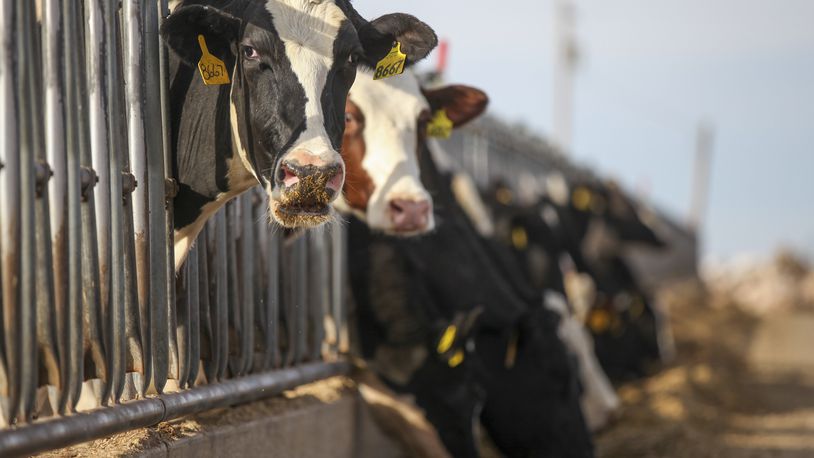“Our milk is still safe to drink,” warned state veterinarian Dr. Dennis Summers with the Ohio Department of Agriculture.
Bird flu has not been previously documented among dairy cows, Summers said, so these detections represent a new emerging disease in the U.S.
For the cows that come down with bird flu, they are quarantined and their milk is removed from the supply until they get better. The animals are monitored and evaluated before returning them to normal operations.
Dairy operations are required to send only milk from healthy animals into processing for human consumption. Milk from impacted animals is being diverted from the commercial milk tank or destroyed so that it does not enter the human food supply, the USDA says.
The process of pasteurization is an added layer of protection. Pasteurization is used to kill bacteria in milk by applying heat to it for a certain set amount of time, according to the International Dairy Foods Association.
There is no concern about the safety of commercially pasteurized dairy products, the Ohio Department of Agriculture says.
“The FDA is still very strongly confident that pasteurization is effective. There are more significant pathogens out there than H5N1 (bird flu) one that is destroyed through pasteurization processes,” Summers said.
Raw, unpasteurized milk can be contaminated with pathogenic bacteria such as listeria, Campylobacter, Salmonella, and E. coli, according to the Food and Drug Administration.
The public health risk associated with bird flu among people remains low, according to the Centers for Disease Control.
The CDC confirmed one person has contracted bird flu during this outbreak after being exposed to dairy cattle in Texas. The patient reported eye redness, consistent with conjunctivitis, as their only symptom, the CDC said, and is recovering. The patient was told to isolate and is being treated with an antiviral drug for flu.
A previous human case occurred in 2022 in Colorado. Human infections with bird flu are uncommon but have occurred sporadically worldwide, according to the CDC.
The cows with bird flu seem to be linked to Texas, where multiple herds with bird flu were first detected. There were two detections in Texas were first announced on March 25, and since then, almost a dozen herds have been impacted, the USDA says. The strain itself appears to have originated from wild birds, the department says.
“It’s still a fairly new development, still a lot to learn,” said Caden Buschur, Darke County OSU Extension agriculture educator.
The OSU Extension Office is recommending farmers quarantine and test newly purchased cattle, as well as monitor and limit entry to the farm by outside workers. Operations should also monitor farm personnel for respiratory symptoms.
Other recommendations from Ohio State include practicing personal hygiene practices, wearing disposable gloves, wearing protective safety glasses or face shields, and wearing clean clothing and foot wear that are used for those specific farms and animals. Clothing or footwear that gets used at the farm should be cleaned and disinfected before being used outside of the farm.
“We’re trying to figure out how...is the virus moving from cow to cow,” Summers said.
The disease does not seem to be spreading among cattle in the same way as it does among poultry, Summers said. Bird flu is highly fatal among poultry, but it’s not the same for cattle and other mammals.
“It’s largely what we call self-limiting, meaning the cows recover. You don’t see high mortality loss as a direct result of the virus,” Summers said.
About the Author
